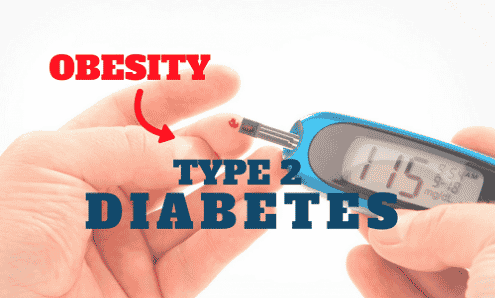People often confuse terms around pancreatic and brain-related diabetes. Understanding type 3c diabetes helps clinicians and families choose safer tests, treatments, and follow-up plans.
Key Takeaways
- Different roots: pancreas disease versus proposed brain-related terminology.
- Diagnosis uses pancreatic history, exocrine testing, and glucose markers.
- Treatment may include insulin plus enzyme replacement and nutrition.
- Hypoglycemia risk is higher due to reduced glucagon response.
- Ongoing monitoring prevents complications and nutritional deficits.
What Is type 3c diabetes?
Clinicians use the term pancreatogenic diabetes for glucose dysfunction caused by pancreatic disease. It can follow chronic pancreatitis, pancreatic surgery, cystic fibrosis, or pancreatic cancer. The pancreas loses both endocrine function (insulin and glucagon) and exocrine function (digestive enzymes), creating a mixed metabolic and nutritional problem. This dual loss separates it from common forms like types 1 and 2.
By contrast, some writers have used “type 3” to discuss brain insulin resistance associated with Alzheimer’s pathology. That usage is not a formal diagnostic category in major guidelines. When discussing care, most professionals prioritize the pancreatic framework to guide testing, nutrition, and medications. For background on pancreatitis as a root cause, see balanced guidance from the National Institute of Diabetes and Digestive and Kidney Diseases (NIDDK pancreatitis overview).
Type 3 vs Type 3c: How They Differ
Type 3 is sometimes used in research to describe neurodegenerative processes, not a routine clinic diagnosis. There is no standard screening algorithm or medication pathway for that proposed entity. In contrast, the pancreatic form requires concrete steps tied to digestive health, nutrition, and glucose control.
Practically, the pancreatic condition involves malabsorption and weight loss risks. Patients may show fat-soluble vitamin deficits and steatorrhea (oily stools). They often need pancreatic enzyme replacement alongside glucose-lowering therapy. These needs differ from typical cognitive risk discussions under the “type 3” label.
Causes and Pathophysiology: Pancreas, Brain, and Beyond
Chronic inflammation, fibrosis, or surgical removal of pancreatic tissue can reduce beta cell mass and insulin secretion. Alpha cell loss reduces glucagon counter-regulation, raising hypoglycemia risk. Exocrine pancreatic insufficiency impairs fat digestion, worsening nutrient absorption and weight stability. These mechanisms explain why therapy must combine metabolic and digestive strategies.
In contrast, brain-centric hypotheses focus on insulin signaling inside the central nervous system. Those pathways may influence cognition but do not map neatly to day-to-day glycemic care. For clinical management, the pancreatic framework remains most actionable. The American Diabetes Association’s annual standards discuss glycemic targets and screening principles helpful for these patients (ADA Standards of Care).
Symptoms and Diagnosis in Practice
Common symptoms include unintended weight loss, diarrhea or oily stools, abdominal pain, early satiety, and fatigue. Hyperglycemia adds thirst, frequent urination, and blurry vision. Hypoglycemia can occur, especially when appetite is poor or meals are skipped. A careful dietary history helps reveal fat malabsorption and vitamin deficiencies.
Workup combines fasting glucose or A1C, pancreatic history, and exocrine testing such as fecal elastase. Imaging may confirm chronic pancreatitis or prior surgery. Clinicians also consider micronutrients, including vitamins A, D, E, and K. When charting, clarity matters; using the term type 3c diabetes diagnosis helps align follow-up plans and nutrition support.
Management and Treatment: Medications, Enzymes, Nutrition
Glucose-lowering therapy often begins with lifestyle, then advances to drugs based on glycemia, weight, and gastrointestinal symptoms. Metformin may help when tolerated but can aggravate GI upset in some. Insulin is commonly required due to impaired endogenous secretion, and clinicians adjust doses carefully to avoid lows. For a class overview and where each drug fits, see the structured summary in Common Diabetes Medications for context.
Pancreatic enzyme replacement (lipase, protease, amylase) improves fat absorption, weight, and symptom control. Enzymes are dosed with meals and snacks, and fat-soluble vitamin monitoring is prudent. Dietitians tailor protein and healthy fats while ensuring adequate calories. Clinicians individualize type 3c diabetes treatment, balancing glucose safety with nutrition, GI tolerance, and patient preferences.
Nutrition, Enzymes, and Practical Tools
Meal planning favors consistent carbohydrate intake, lean proteins, and nutrient-dense fats. Enzymes are taken at the start of meals, with dose adjustments for fat content. A dietitian can coordinate enzyme timing with carbohydrates to stabilize post-meal glucose. Patients who use syringes may prefer fine-gauge options; for injection comfort details, see BD Ultrafine II Syringes as an example resource.
Those using vials should protect insulin from temperature swings during daily life. For carry and protection considerations, read the brief guide on Vial Safe Insulin Protector 2 when planning travel or workdays. Diet advice should also address gastroparesis risk in longstanding diabetes and ensure consistent protein to preserve muscle mass. Patients and caregivers can revisit Diet and Weight Loss with GLP-1s to understand appetite effects when these agents are discussed.
Monitoring, Blood Sugar Targets, and Hypoglycemia
Glucose monitoring supports safe titration, especially during enzyme initiation or dose changes. Continuous glucose monitoring can reveal nocturnal lows and missed peaks. When exocrine insufficiency improves with enzymes, carbohydrate absorption may rise, and doses might need adjustment. Documenting meal timing and enzyme use helps explain unexpected readings.
General targets follow standard care but are individualized for comorbidities and hypoglycemia risk. Discuss the pros and cons of tight control with your clinician. When writing care plans, specify goals for type 3c diabetes blood sugar levels and include sick-day rules. If using insulin pens or cartridges, practical device details are covered in the Insulin Cartridges Guide for context on handling and benefits.
Lifestyle Factors: Diet, Alcohol, and Pancreatitis Risk
Alcohol can worsen pancreatic inflammation and malabsorption. Even small amounts may increase hypoglycemia risk when appetite is reduced. Team-based counseling around pancreatitis prevention is essential. Consider referral for cessation support when appropriate and screen for nutrient deficits regularly.
Balanced eating emphasizes protein adequacy, fiber, omega-3 fats, and micronutrient repletion. Many benefit from smaller, frequent meals paired with enzyme dosing. Clinicians should document guidance on type 3c diabetes alcohol and include practical harm-reduction strategies. For broader education pieces that complement clinic visits, the Diabetes Articles library groups related topics in one place.
Prognosis and Complications: Risks and Prevention
Complications can mirror those of other diabetes types, including retinopathy, neuropathy, kidney disease, and cardiovascular disease. Malnutrition, osteoporosis, and fat-soluble vitamin deficiencies add unique risks. Early detection, nutrition therapy, and tailored glucose targets reduce hospitalizations and improve well-being. Multidisciplinary follow-up helps detect changes in weight, stool patterns, and glucose variability.
Screening plans should include retinal exams, kidney function tests, and neuropathy checks at recommended intervals. Vaccinations and bone health assessments are part of routine care. Counseling should also address the unique profile of type 3c diabetes complications to set expectations and guide preventive steps. For a related look at cardiovascular risk thinking, see Mounjaro Heart Benefits for how metabolic control links to heart outcomes broadly.
Compare With Type 1 and Type 2: Why It Matters
Type 1 diabetes features autoimmune beta cell destruction and absent insulin production, often in younger people. Type 2 involves insulin resistance and relative insulin deficiency, commonly tied to overweight and genetics. The pancreatic form overlaps features of both: low insulin output like type 1, plus malabsorption that complicates dosing. Glucagon deficiency further separates it by increasing hypoglycemia risk.
Medication choices reflect these differences. Some oral agents may offer limited benefit when insulin secretion is very low, while insulin remains central. Because risks and strategies differ across categories, understanding comparisons can refine care plans. For perspective on balancing severity across common types, the editorial piece Which Is Worse: Type 1 or Type 2 discusses how context shapes management.
Putting It Together: Practical Care Steps
Start with history of pancreatitis, surgery, or cystic fibrosis. Check A1C, fasting glucose, fecal elastase, weight trends, and fat-soluble vitamins. If malabsorption is confirmed, begin enzymes and dietitian support. Introduce glucose-lowering therapy with frequent reviews to avoid hypoglycemia during diet changes.
Educate on how enzymes and meals affect insulin timing. Adjust doses when GI symptoms shift or weight changes quickly. Reassess bone density and vitamin status yearly, and update vaccines. For general heart–metabolic topics and newer medications, see the comparative review Orforglipron vs Tirzepatide as background on incretin effects, and explore Diabetes-Heart Connection Day for why cardio-metabolic care intersects.
Recap
The pancreatic form differs from brain-centric uses of the term “type 3.” Clear naming, exocrine testing, and nutrition-led care improve outcomes. Align medications with enzyme timing and appetite. Regular monitoring, preventive screening, and team support help patients stay safe and nourished.
Note: Targets and therapies should be individualized with a qualified clinician. For general learning pathways, browse the curated Diabetes Products and related education pages, which can inform discussions during appointments.
This content is for informational purposes only and is not a substitute for professional medical advice.


